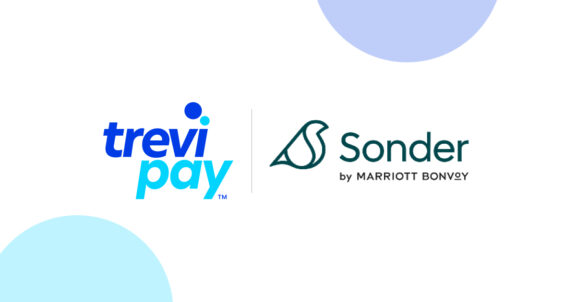The world of B2B payments and credit solution programs changes at a pace that feels almost instant. Sometimes, the ever-changing nature of this industry can make it hard to keep up, especially if you’re unfamiliar with terms or phrases. We’ve put together a comprehensive list of all the most commonly used terms in B2B payments to help you better understand the industry as a whole and how your business can benefit from integrating a payment experience into your tactics.
A B C D E F H I L M N O P R S T W
Key Terms in B2B Payments (A-Z Glossary)
A
ACH: An Automated Clearinghouse (ACH) is a digital network that facilitates payments in the U.S.
Alternative Payments: Payment types that eliminate card associations and that are used as an alternative to credit-card transactions (e.g., debit cards, prepaid or stored-value cards, direct debit, bank transfers, mobile payments, checks, cash, money orders).
A/P: Accounts Payable (A/P) is the balance of money owed by a business to a supplier.
API: An Application Programming Interface (API) is a communication protocol that enables a client to interact with a server, simplifying the development of client-side software. In terms of a B2B payments platform, an API is used to enable the systems belonging to the buyer, seller, and TreviPay to effectively communicate with one another.
A/R: Accounts Receivable (A/R) is the balance of money due to a business for goods or services that have been delivered but not yet paid for.
Authentication: The process of verifying the identity of a credit-card user, such as when a cardholder is required to provide secret information, such as a Personal Identification Number (PIN), to complete a transaction or request information.
Authorization: The initial electronic request made by a merchant for a customer’s card issuer to release funds. This verification process confirms that a credit card has adequate funds to cover a transaction.
B
B2B2C: Business-to-Business-to-Consumer (B2B2C) is a model that allows a company to sell to another business as well as directly to the end customer.
B2B Payments (Business to Business): A transaction between two or more businesses that could include a variety of different payment options. An example could include a manufacturer purchasing goods from a wholesaler, a marketplace transacting with a retail business, or an organization paying its monthly rent.
Back-office: The part of a business operation that focuses on the actual production of a product or service. Often, back-office tasks aren’t seen by customers and include activities such as planning, accounting, supply chain management, logistics, and inventory management.
Business intelligence: Business intelligence (BI) encompasses the technologies organizations use for data analysis on a set of information. These technologies provide companies with historical, current and predictive views of operations. BI can also provide companies with powerful insights into the behaviors, trends, and preferences of consumers.
Business Process Outsourcing: Business Process Outsourcing (BPO) is a practice where a company hires a different organization as an external service provider.
C
Cart abandonment: The act of adding items to a shopping cart during the online purchasing experience but leaving before the transaction is completed.
Closed-loop program: A line of credit that allows buyers to only shop from a specific seller.
CRM: Customer Relationship Management (CRM) is a software platform that manages all relationships and interactions for an organization’s current customers and potential customers.
Cross-border payments: Money transactions that involve organizations, banks or individuals in at least two different countries.
D
D2C: Direct-to-Consumer (D2C) is a model that enables manufacturers to sell directly to consumers.
Digital transformation: The application of newer and faster digital technologies to create new or alter business processes to better meet the changing needs of market requirements.
DSO: Days Sales Outstanding (DSO) refers to the average number of days it takes a company to collect payment after a sale has been made.
Dynamic pricing controls: A feature within TreviPay that can validate contract pricing by customer, to the SKU level, and across geographies.
E
EFT: Electronic Funds Transfer (EFT) refers to the electronic transfer of money from one bank account to another, without using a paper check.
Embedded finance: broadly defines the collection of financial processes and services a company offers directly to buyers and consumers in an efficient, unobtrusive manner.
Embedded Payments: A B2B payment solution that is integrated into an organization’s eCommerce platform and acts as a white-label payments experience responsible for processes such as credit approval, invoicing, credit card processing, and settlement, that accompany each transaction. A primary purpose of embedded payments is to make the payment process frictionless so that transactions feel like a natural extension of customer engagement.
ERP: An Enterprise Resource Planning (ERP) is a software platform that manages the day-to-day activities of an organization, such as purchasing, accounting, compliance, risk management, supply chain management and project management.
F
False positives: A false positive occurs when an innocent transaction is incorrectly flagged as suspicious by the fraud detection system, which is designed to prevent theft. However, these systems can sometimes make mistakes. Credit cardholders can run into false positives when trying to purchase online and the transaction is denied due to the system marking the charge as potential theft, despite it being legitimate.
Foreign Exchange (FX): is the exchange, or conversion, of one currency into another currency. Foreign Exchange also refers to the global trading market whereby currencies are virtually exchanged around the clock, with the largest centres being based in London, New York, Tokyo, and Singapore. The term Foreign Exchange is frequently abbreviated to ‘forex’ as well as ‘FX’.
H
Headless commerce: Headless commerce refers to rethinking the eCommerce platform as a collection of digital services that support commerce versus a sole solution for eCommerce on the web specifically. This involves separating out templating, presentation and interactive layers of the customer experience from order management, product information management systems, and payment acquisition. When these items are separated, it allows businesses to decouple development and put the focus on resources to better meet the needs of consumers without being concerned about the impact on critical systems of record like product databases or payment processing.
I
International Bank Account Number (IBAN): A standardized, internationally recognized format of account number used to identify an individual account, making it faster and easier to process cross-border transactions across Europe. An IBAN is composed of a code that identifies the country the account belongs to, the bank that holds the account, followed by the account number.
L
Level 3 data: Level 3 data is a detailed set of information that correlates to the line item invoice details about the goods or services being purchased. This level of data is best for both buyer and seller as significantly more information is provided before the settlement and lends itself to optimal reporting for both parties.
M
Machine learning: A branch of artificial intelligence wherein systems can learn from data, identify patterns and make decisions with little to no human interaction. In the payments space, machine learning is leveraged to learn about customer behavior and offer products or services to cater to those findings.
N
Net30 Terms: An agreement between buyer and seller where the payment for the goods or services is due in full 30 days after the transaction has been completed.
O
Omni-channel: A cross-channel shopping strategy that prioritizes user experiences. The most commonly used channels in an omni-channel strategy include eCommerce, brick-and-mortar locations, telesales, and social media.
Order to Cash: Order to Cash (O2C) refers to the process of receiving and fulfilling a customer’s request for goods or services.
P
POS: Point of Sale (POS) refers to the location and time where a retail transaction occurs. In eCommerce, the POS system brings the transaction, customer management, and inventory together in one central location.
Payment Service Provider (PSP): A third party that facilitates payments on behalf of merchants, typically by partnering with an acquirer (such as a bank). The PSP takes on the responsibility of ensuring that electronic payments are processed in a secure and reliable way. Some PSPs are able to provide merchants with a connection to multiple payment methods and networks, including cross-border payments, digital wallets, P2P (peer-to-peer) transfers, and other alternative payment methods.
Purchase controls: The practice of putting specified individuals in an organization in charge of making decisions around purchasing, which involves picking vendors, managing inventory, purchasing items or services, inspecting purchased items or services and tendering payments.
Purchase order: A document issued by a buyer to a seller that displays the type and amount of a specified product or service at an agreed-upon price.
Purchasing Card (P Card): A commercial card issued to a business for use by an employee for transactions made outside the standard corporate-purchasing process.
Purchasing experience: The entire process that a buyer goes through from inquiry to the order of goods or services.
Purchasing power: The number of goods or services that can be purchased based on the amount of money a business has available.
R
Replatforming: Moving eCommerce operations from one platform to another to better optimize the overall experience and performance.
Risk-free credit line: An amount of money available to an individual buyer that takes the risk of late or lack of payments off of the seller as the borrowed money does not come from the seller’s working capital. With TreviPay, sellers can offer credit lines to buyers while TreviPay absorbs the risk.
S
Single Euro Payments Area (SEPA): A European payment initiative that was introduced in order to establish a single payment market; making it simple and less costly for consumers and businesses to make and receive payments across Europe. SEPA payments are available in 35 countries, and provide cross-border bank transfer capabilities for businesses, merchants, and consumers in a way that is equivalent to making a domestic payment.
Share of wallet: The measurement used to calculate the percentage of a customer’s spending for a type of product or service that goes to a specific organization.
Supply Chain Finance: The optimization of working capital and liquidity among trading partners through a range of approaches and instruments. One of the most common approaches consists of a bank getting involved in a supply chain transaction by paying a company’s suppliers sooner (and at a slight discount) than the company would normally pay (e.g., immediately after the product leaves the warehouse vs. 60 days) and then collecting the full amount weeks later from the company.
T
Trade credit: Used mostly in Europe, trade credit refers to the arrangement between a buyer and seller where the buyer can acquire goods or services on account without having to pay immediately.
TreviPay: a global fintech company specializing in B2B payment and credit management through custom omnichannel payment solutions. TreviPay supports merchants by streamlining the purchasing experience and supporting B2B commerce.
W
White label: White label is a feature of a product or service wherein one company produces said product or service and rebrands it in a way that allows other companies to apply their logos and brand guidelines.
Working capital: The money a business has available to use in its day-to-day operations.
How TreviPay Supports B2B Payments
Understanding the language of B2B payments is just the beginning. TreviPay brings these terms to life through real-world solutions that simplify complex processes from automated invoicing and embedded net terms to global buyer onboarding and risk-free credit management.
Whether you’re looking to reduce DSO, improve buyer experience, or scale across markets, TreviPay’s managed A/R platform helps you turn payment complexity into a competitive advantage.
Learn how to streamline invoicing and offer smarter financing options with TreviPay.






